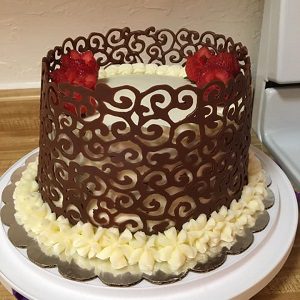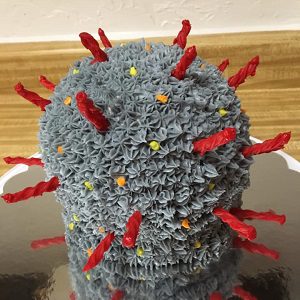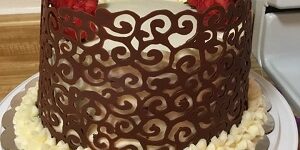Kate DeAngelo, MLS(ASCP)CM
 |
 |
 |
 |
Being a graveyard employee has many pros and cons. The biggest pro is the glorious seven days off after seven days on. However, overhauling my sleeping schedule from days to nights and back again is undoubtably the biggest con. When I first started my career as a medical laboratory scientist, staying awake between the hours of 2:00 and 5:00 am plagued me during the switch. I burned through hours of TV and social media, which I realized wasn’t sustainable and an utter waste of time. I challenged myself to find a hobby that could fit in my small apartment to combat those heavy-eyed nights.
In an effort to tap into my artistic side, I started baking. Nervously, I brought my creations to the break room and anxiously waited for feedback. After hearing positive responses from my coworkers, this became a bi-monthly tradition. Each baking opportunity provided me with a chance to expand my culinary skills and work with different ingredients. Before I knew it, a simple cake became a canvas for me to practice decorating techniques; looking up Pinterest recipes became a second job, and I was hooked on creating delicacies for others to enjoy. Baking evolved into a constructive pastime that prompted me to build my sugar-based repertoire, greatly assisted me with shifting my days to nights, and most importantly, boosted lab morale.
I don’t intend for this article to inspire you to master blueberry scones. I hope to encourage you to find a hobby that challenges you.
When COVID-19 came to Idaho and our lab, I decided to make lemonade—rather, lemon cake—out of lemons. I was inspired by some of the visual representations of the virus and decided to challenge myself to make a cake that resembled it. I filled two hemisphere pans with cake batter, secured the finished hemisphere cakes together with raspberry filling, and covered the sphere with vanilla buttercream frosting. I decoratively piped grey frosting to provide a flare on the membrane, plus orange and yellow frosting to highlight the proteins. Because no detail is too small, I used Red Vines to represent the virus’ spike proteins. My coworkers were in awe by the COVID-19 cake masterpiece and were hesitant to disturb its untouched appearance.
The pandemic aside, I’ve been baking for over three years for the St. Luke’s Magic Valley Laboratory in Twin Falls, Idaho. I’ve baked cookies, specialty cakes, pies, tarts, pastries, you name it. Notably, one of my favorite creations was concocted for Lab Week a few years ago. The theme of the dessert competition was “Bring Your Favorite Lab Specimen.” After pondering the theme for a while, I decided to create a “Rh Incompatibility in a Cord Blood” cake. It was a red velvet cake rolled with whipped cream and topped with cherry pie filling to give it the appearance of being bloody with the cherries serving as agglutinated cells. I garnished the cake with a steak knife stuck in the middle, because again, no detail is too small. My coworkers were equally disgusted and intrigued by my creation, which meant more to me than winning the competition.
I don’t intend for this article to inspire you to master blueberry scones. I hope to encourage you to find a hobby that challenges you. Don’t let a seemingly daunting appearance prevent you from taking that first step; start with manageable pieces and build from the ground up. And, as always, don’t beat yourself up for failing. Google, “Pinterest baking fails,” and you will probably see many things that went wrong in my kitchen. Take the leap, try something new, and turn it into something that makes others smile.
Kate DeAngelo is a Medical Laboratory Scientist at St. Luke’s Magic Valley in Twin Falls, Idaho.
Baking, for author Kate DeAngelo, has allowed her to tap into her artistic side, helped her shift her days to nights, and boosted lab morale as she shares her delicious creations with co-workers.
